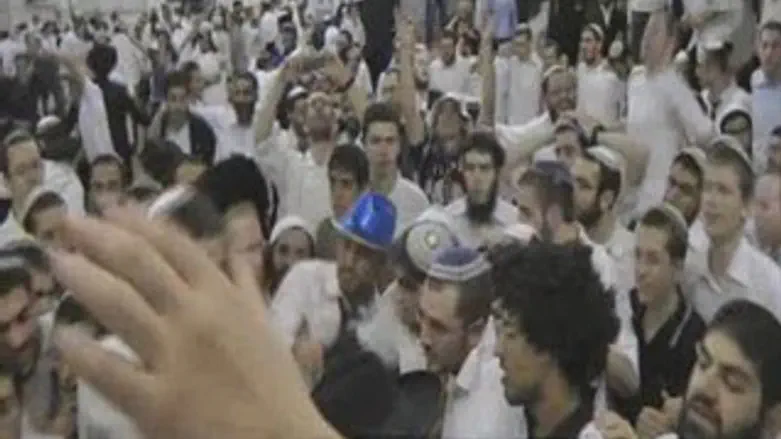
While every other of the three pilgrimage holidays has a special and distinctive theme, Sukkot, seemingly does not. Pesach’s genre is Cherut (freedom) and Shavout’s is Matan Torah (the giving of the Torah), each something which defines them and articulates their uniqueness. Yet, Sukkot’s theme is Simcha (happiness), which is an element also found on the other holidays, for every holiday has a Mitzvah of Simcha. Why does Sukkot not receive it’s own unique motif?
Perhaps one may simply suggest that Sukkot has quantitatively more Simcha. Although there is nothing unique to Sukkot, it is somewhat different; it has more Simcha than the other holidays. One may even find support to this in the Rambam (Luluv 8:12) who says Sukkot has “Simcha Yitara” (extra happiness).
Alternatively, one may theorize that the Simcha found on Sukkot is qualitatively different from the Simcha found on the other holidays. In other words, there are two models of Simcha, one is the classic model that exists by Pesach and Shavout as well as Sukkot, and the other is a special and unique model which is found only at the holiday of Sukkot. Sukkot has a unique type of Simcha which characterizes it, similar to the way Cherut characterizes Pesach and Matan Torah does Shavout.
What are these two models, and which one exists by Sukkot only? Perhaps examining the different Halakhot of each may serve a bases to develop a theory that can explain Sukkot’s uniqueness.
How does one fulfill the Mitzvah of Simcha that exists for all the holidays? For men, drinking wine, women, buying new clothing, etc. each person subjectively should be involved with what they enjoy (Pesachim 109a). The goal seems to be to increase people’s happiness, each person with what personally makes them happy.
By contrast, the Simcha of Sukkot is accomplished differently. Lifting the Luluv in the Beit HaMikdash is described by the Torah as “U-Samachtem” (and be happy) (Vayikra 23:40). Moreover, the Simchat Beit HaShoava (Sukkot water-drawing festivals) took place in the Beit HaMikdash as well.
The Sefer HaChinuch (Mitzvah 324) claims that this time of year is a time when people are naturally happy, after all its the harvest season, where farmers rejoice in the success of a year’s hard work. Furthermore, one can add that being spiritually cleansed after Yom Kippur adds to the happy feeling.
Sukkot’s goal is take that happiness and channel it towards Hashem, everywhere, as we lift a Luluv everywhere the first day, but specifically in the Beit HaMikdash, where we lift a Luluv all seven days (on a Biblical level). Lifting the Luluv and Etrog, objects that physically embody the successful harvest are used to as religious practice, used to serve Hashem.
While the goal of the classic Simcha, the one found on all three holidays is to generate happiness and rejoice in a greater fashion, Sukkot’s Simcha is fundamentally different. Because there is a preexisting Simcha, the Torah aims at focusing that Simcha towards Hashem. One is supposed to express their innate happiness in a proper religious fashion, through sincere religious experience.
This lesson is not just important for Sukkot, but for life in general. One should navigate their natural emotions and feeling in a way that can better serve Hashem.